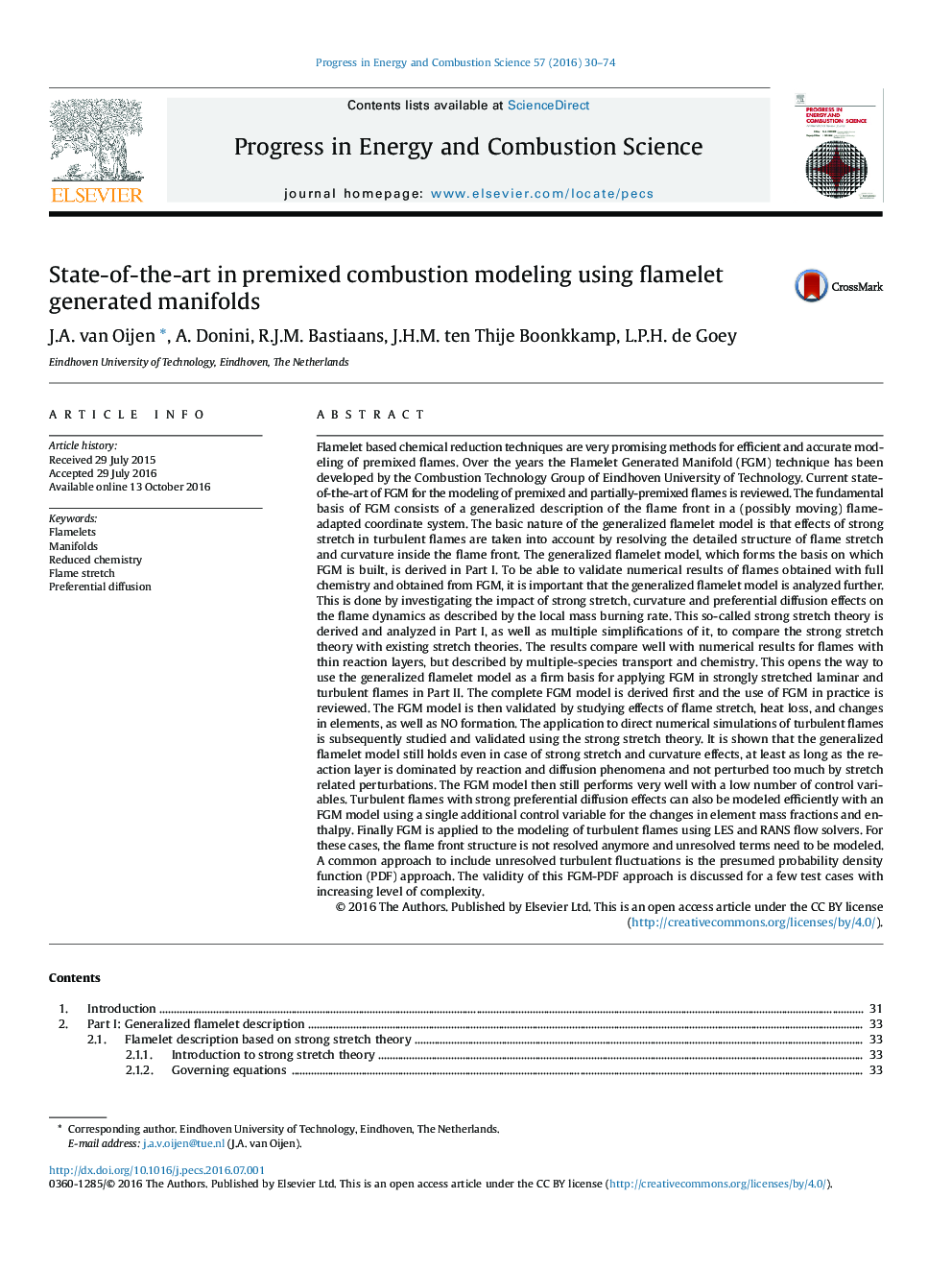| کد مقاله | کد نشریه | سال انتشار | مقاله انگلیسی | نسخه تمام متن |
|---|---|---|---|---|
| 6478320 | 1427951 | 2016 | 45 صفحه PDF | دانلود رایگان |
Flamelet based chemical reduction techniques are very promising methods for efficient and accurate modeling of premixed flames. Over the years the Flamelet Generated Manifold (FGM) technique has been developed by the Combustion Technology Group of Eindhoven University of Technology. Current state-of-the-art of FGM for the modeling of premixed and partially-premixed flames is reviewed. The fundamental basis of FGM consists of a generalized description of the flame front in a (possibly moving) flame-adapted coordinate system. The basic nature of the generalized flamelet model is that effects of strong stretch in turbulent flames are taken into account by resolving the detailed structure of flame stretch and curvature inside the flame front. The generalized flamelet model, which forms the basis on which FGM is built, is derived in Part I. To be able to validate numerical results of flames obtained with full chemistry and obtained from FGM, it is important that the generalized flamelet model is analyzed further. This is done by investigating the impact of strong stretch, curvature and preferential diffusion effects on the flame dynamics as described by the local mass burning rate. This so-called strong stretch theory is derived and analyzed in Part I, as well as multiple simplifications of it, to compare the strong stretch theory with existing stretch theories. The results compare well with numerical results for flames with thin reaction layers, but described by multiple-species transport and chemistry. This opens the way to use the generalized flamelet model as a firm basis for applying FGM in strongly stretched laminar and turbulent flames in Part II. The complete FGM model is derived first and the use of FGM in practice is reviewed. The FGM model is then validated by studying effects of flame stretch, heat loss, and changes in elements, as well as NO formation. The application to direct numerical simulations of turbulent flames is subsequently studied and validated using the strong stretch theory. It is shown that the generalized flamelet model still holds even in case of strong stretch and curvature effects, at least as long as the reaction layer is dominated by reaction and diffusion phenomena and not perturbed too much by stretch related perturbations. The FGM model then still performs very well with a low number of control variables. Turbulent flames with strong preferential diffusion effects can also be modeled efficiently with an FGM model using a single additional control variable for the changes in element mass fractions and enthalpy. Finally FGM is applied to the modeling of turbulent flames using LES and RANS flow solvers. For these cases, the flame front structure is not resolved anymore and unresolved terms need to be modeled. A common approach to include unresolved turbulent fluctuations is the presumed probability density function (PDF) approach. The validity of this FGM-PDF approach is discussed for a few test cases with increasing level of complexity.
Journal: Progress in Energy and Combustion Science - Volume 57, November 2016, Pages 30-74
